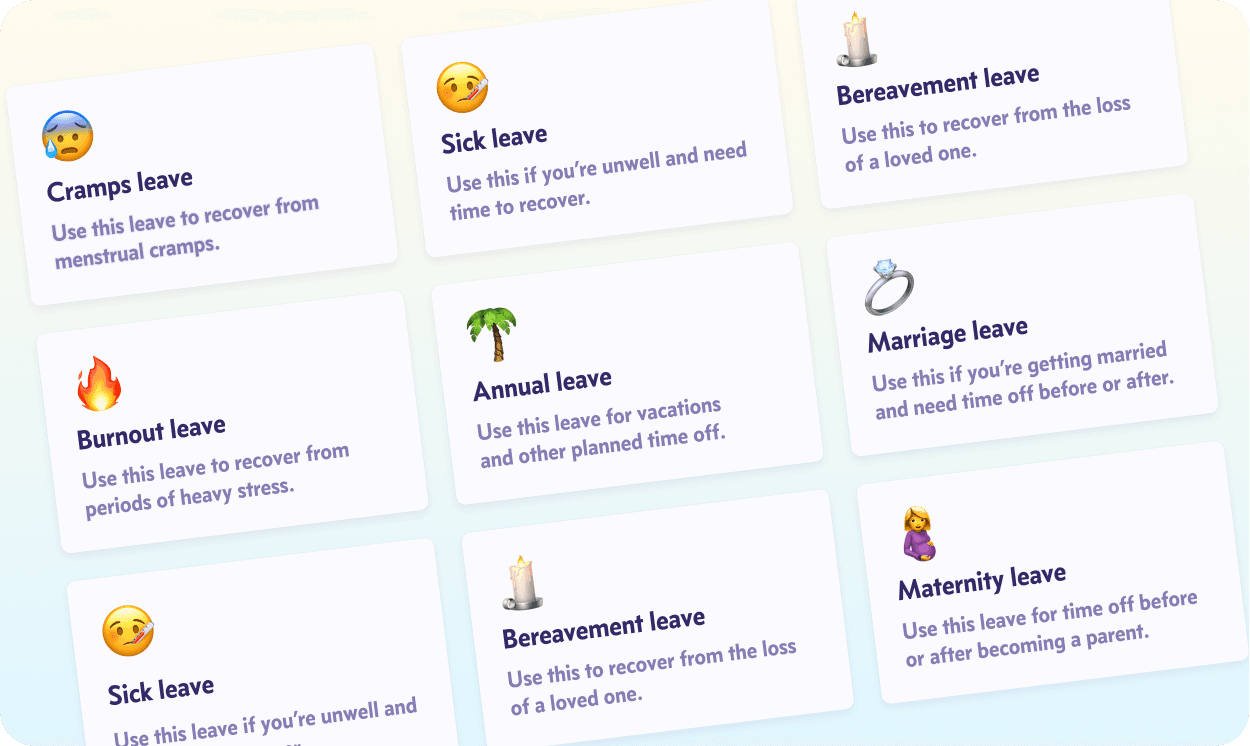5 tips for requesting time off from work without stressing out
Nov 29, 2021

Sending a time off request got you shaking in your boots? You're not alone. Despite leave allowances being an employee's right, when it comes to asking for it, many tend to falter. It has a lot to do with how hyper-productive work cultures see breaks as lazy or a waste of time.
We've said this before and we'll say it again: asking for time off is a good thing! It means you recognise that you need a break and are not afraid to ask for it. When you do it right, submitting a time off request also gives your colleagues and teams a fair warning so they can plan for any disruptions well in advance.
Tips to submit a time off request
Review your company's leave policy
Every organisation worth its salt has a leave policy to guide employees. Look yours up to clarify a whole host of things, including:
What leave types you can take
How many leave days you've accrued so far
How many days can you claim at once
Who you need to send your time off request to
How far in advance you have to send your time off request
What format is preferred in your organisation
Having all this information at hand will help you place a time off request the right way and at the right time.
Ensure your schedule can accommodate time off
Before you place a time off request, it's always good practice to make sure your schedule isn't too packed with work. If there are events or tasks you might need to juggle around, do so or give colleagues a heads up that you're planning to.
It's also good to make sure that your manager doesn't need the whole team present during those days. After all, you don't want to go on vacation only to have your phone blow up with notifications right from the first day, right?
Keep your manager in the know
Even if your time off request is still in the planning stages, it's good to keep your manager in the know. That way, they'll be able to help you re-arrange your schedule, plan projects accordingly and give the team a heads up. While time off is a personal perk, it has a lot of impact on one's team and their workload. That doesn't mean you should never take time off — it means you need to inform the right people well in advance!
Be as transparent as you can
Transparency is key to getting your time off request right and—hopefully—approved. It shows the organisation that you really need time off and also displays that you aren't hedging the topic or simply taking off out of the blue. Let your team and managers know everything they need to work efficiently. That includes the dates of your time off request.
If you're not too keen to reveal the precise reason, that's quite all right! You're totally entitled to privacy — all you need to do is not lie about it. For example, if you're undergoing a medical procedure that you want to keep private, you could give your reason as "medical check-up" or simply take sick leave.
Use a leave management tool
Emails and spreadsheets can become clunky and confusing too quickly — and that increases the risk of your time off request getting lost in the internet void. No matter the size of your organisation, it can benefit from using a leave management tool that organisations time off applications and approvals, records all necessary data, and lets teammates know automatically.
When you send a time off request with a leave management tool like Pause, it is immediately recorded in the system and sent to the corresponding manager. Once approved, the details go on your team calendar so everyone's in the know, and is also pushed out as a notification on Slack if you use it.
The final word
It's always a great idea to ask sooner than later because that gives everyone more time to plan around your absences, increasing your chances of getting approval. Good luck with your time off request!



